Hoods: What You Need To Know Before Buying One
A cooker hood is a long-term investment piece that needs to be the best visually and in performance.
With different elements that can be matched to suit your cooking requirements, some cooker hoods are designed to be perfectly integrated into your kitchen's design. Depending on where your cooker is going to be placed, this will determine what happens to all of the moisture, grease and aromas from your cooking. When this air is removed from your kitchen it needs to go somewhere, so it can either be sent outside or recirculated back into the kitchen using carbon filters.
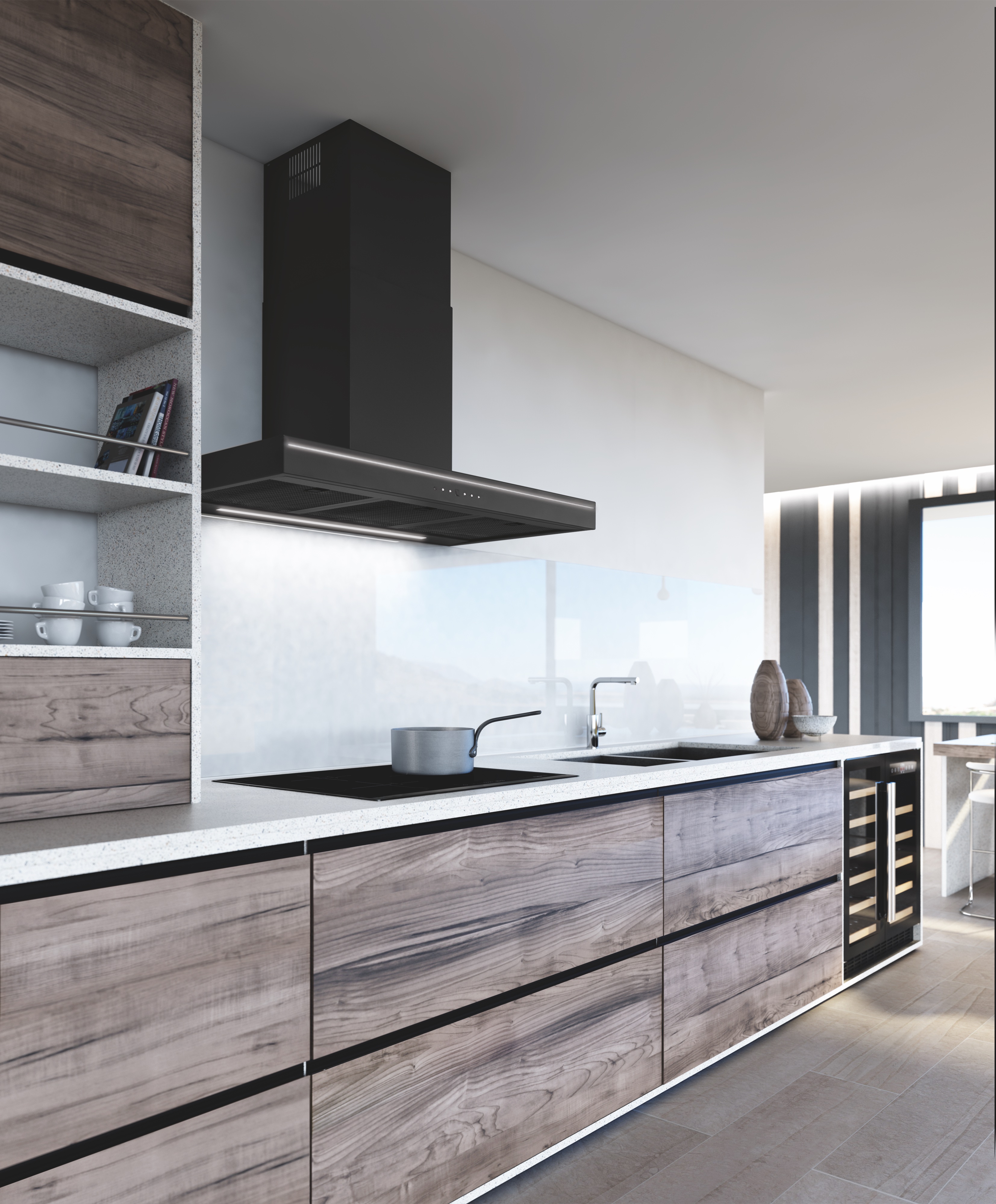
Here is what you need to know before buying a cooker hood...
What is the difference between extraction and recirculation?
An extraction hood simply sends the odours and grease outside through an external wall. Extraction requires access to an external wall in order to place the vent. This can sometimes be a problem as certain kitchen layouts won't allow this.
When using the extraction method, air is drawn into the cooker hood, where this will trap fats by using the grease filter and release the rest of the fumes outside. Although extraction hoods are more effective than recirculation hoods, they are more expensive to install due to these extra requirements.
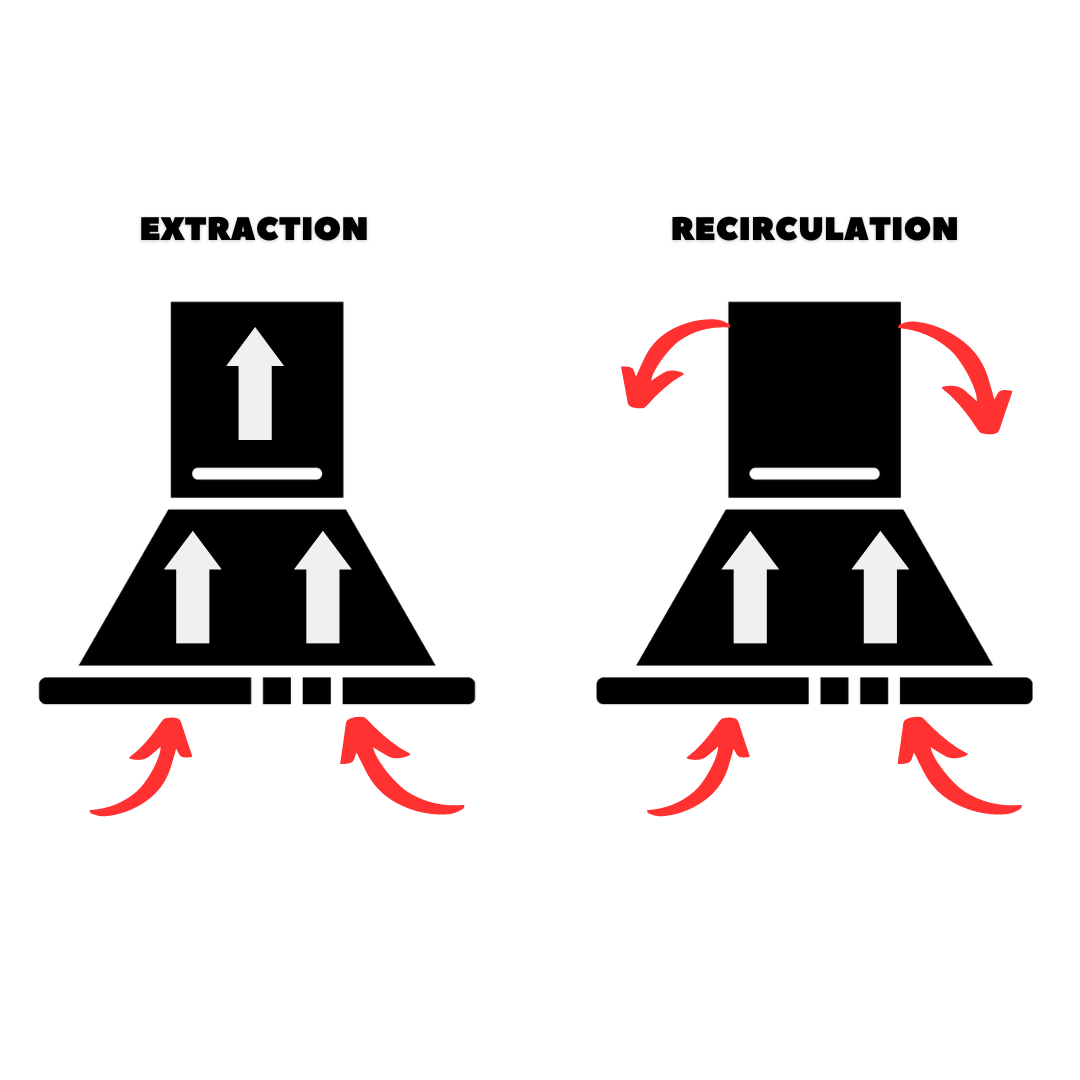
A recirculation hood pushes the air up through carbon filters inside, which then removes any moisture and smells before the air is then reintroduced into your kitchen. Most recirculation hoods also feature a grease filter as well as a charcoal filter, which both work together to remove the food smells and any smoke from the air. A charcoal filter is required if you want to neutralise the odours whilst you're cooking.
Recirculating cooker hoods are often cheaper than extraction hoods as you don't need to take into consideration the ducting that would be used for an extraction hood. However, what does need to be considered is the cost of replacement filters, as these do not last forever.
A recirculating hood is perfect for someone who wants to redo their kitchen without worrying about the design features if it is not possible to situate your hood close to an outside wall.
What size should my cooker hood be?
One of the first things you should consider when choosing your cooker hood is the size you will need. We recommend matching the size of your hood with the size of your hob, meaning it will cover all smoke and odours.
You should also measure from the top of your cooker or worktop to the bottom of your cabinet or ceiling to make sure your cooker hood will fit. Take into account the hot zone, which we recommend as being 75cm above a gas hob and 65cm above an electric hob.
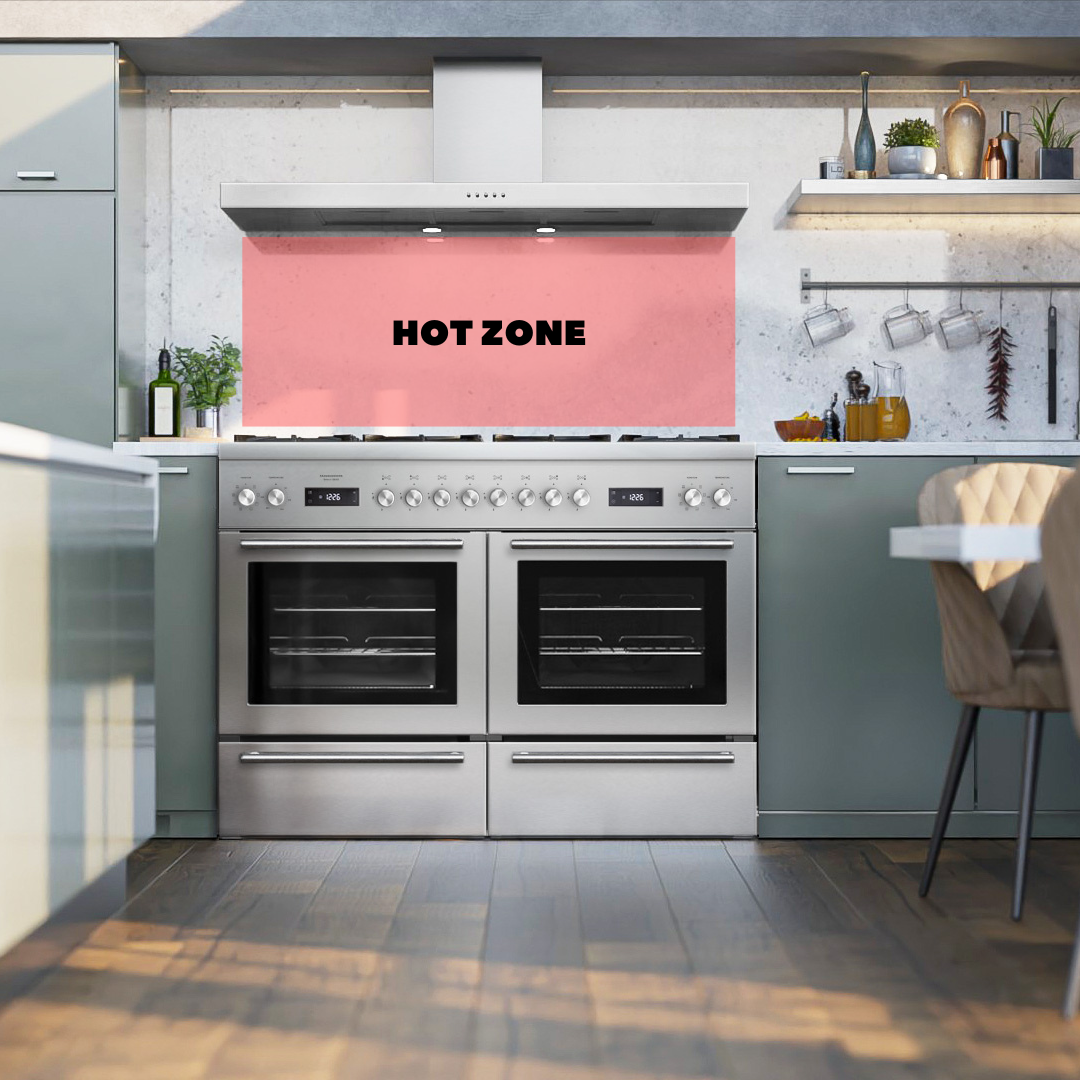
An exception can be made for angled glass cooker hoods, which can be as low as 45cm above an electric hob.
How do I calculate the extraction rate my kitchen needs?
Your extractor hood will clean the air around the whole room, not just near to your hob, so you will need to factor in the size of your kitchen space before buying. This is particularly important if you have more of an open plan living space.
To work this out you will need to take the volume of your kitchen (length x width x height), then multiply this by ten to work out the minimum extraction rate you will need.
How much does a cooker hood cost?
The cooker hoods we offer here at Rangecookers.co.uk cost from £225 up to £4,295.
What style of cooker should I go for?
Depending on whether you want a classic and traditional design or a sleek and modern, there are a variety of cooker hood styles to choose from:
Wall mounted hoods often resemble a chimney in shape, being wide at the bottom and narrow at the vent. They add a style statement to your kitchen and powerfully extract any odours.
They are typically more expensive than integrated hoods but often look more aesthetically pleasing in a kitchen and the more logical choice to install. At Rangecookers we offer a variety of types when it comes to wall mounted hoods, from the traditional to the super modern.
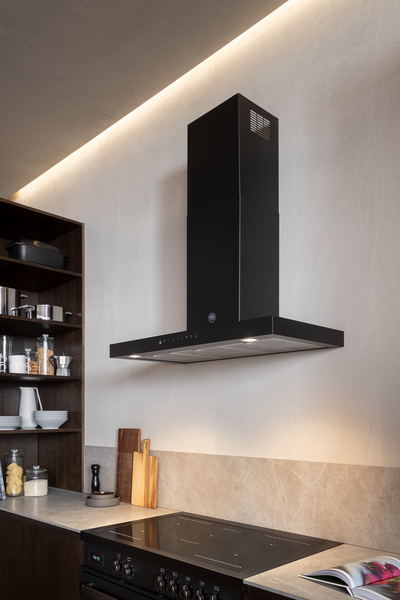
This Bertazzoni Professional 90cm t-shaped hood is perfectly in keeping with other Bertazzoni Professional series appliances. It has a single powerful motor with three speed settings, plus a booster function, for top performance. It offers an impressive extraction rate of 750m3/h and has an energy rating of A+.
With electronic controls, plus the addition of two bright LED lights illuminating your cooker, Bertazzoni couldn't have made this hood any easier to use. Available in Stainless Steel, Carbonio or Nero Matt, this hood is easy to match with any kitchen design.
For cookers placed as part of an island in the centre of the kitchen, an island hood is a great choice. You are free to position your cooker wherever you want it, with all sides of the hood being visible as it is suspended from the ceiling.
One of the more glamorous hoods available, an island hood is one of the biggest and more expensive hoods to choose from. They attach directly to the ceiling, or are suspended from above, so you will need the height space within your kitchen for this. A lot of island hoods are now made to look more like a lighting feature to create a more visually appealing look.
If you are looking for this special kind of hood, look no further than the Faber Odette Plus. This elegant hood acts not only as a great extraction appliance but also as a fantastic statement piece for your kitchen.
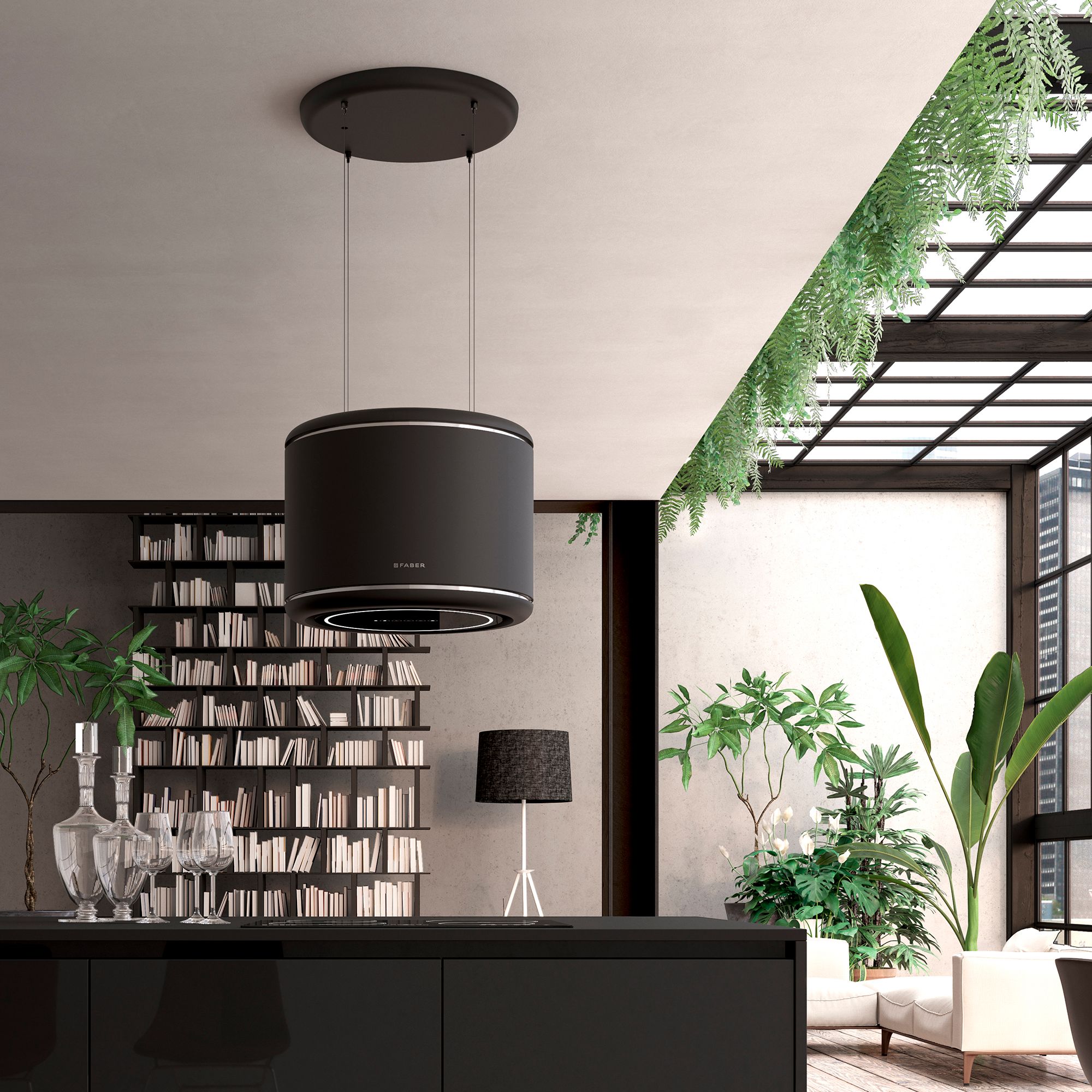
Featuring Faber's Up & Down technology, the Odette Plus descends to illuminate and ventilate the hob when needed and ascends to masquerade as a light fitting when not performing. Its bright but discrete micro-LED display provides illumination of your cooking below and is aided by the highly efficient Evo Diffuser blower to get the optimum balance of efficiency, silence and power consumption.
Delayed switch-off, a remote control and Faber's Connection function (allowing you to operate the hood via a compatible Faber hob) are there for daily convenience and you can even set this hood to run in virtual silence for 24 hours a day if you like to keep your kitchen fresh.
Faber's Airlane technology places a hidden second fan unit in your ceiling and gives you a choice of four outlet positions to allow you to vent out directly using a clever rising of vortex air. It efficiently pulls in steam and fumes from the top of the hood, as well as the room in general.
A hidden cooker hood is perfect for those who do not want to make it a design feature within their kitchen. They are integrated into either a cabinet or underneath the cabinet and can be disguised as any other wall cupboard.
Integrated hoods are very simple to use and are ideal for smaller hobs rather than the larger models, although this can be done. These hoods are seamless, compact and will not impact on your kitchen's aesthetic. Under cabinet hoods can either include ducts that will transport the smoke and air out of the kitchen or without ducts that will recirculate the air back into the kitchen.
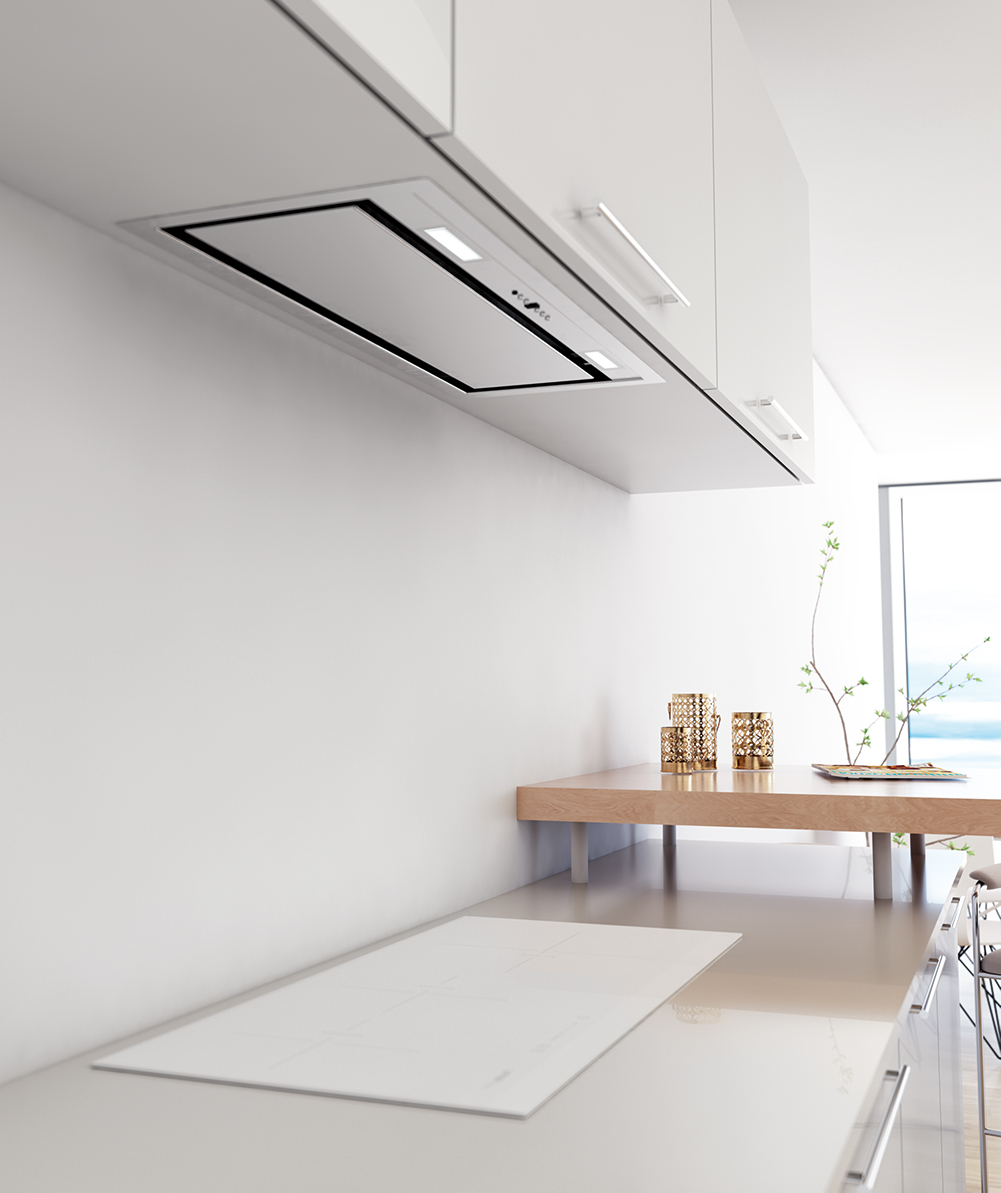
The Miro GA Filo canopy extractor is the perfect addition to any kitchen mantle or wall cabinet. This 760mm model features three speeds, plus a booster power level for removing the cooking grease and odours from the room.
Controlled by touch controls, or with the remote control provided as standard, this hood also features two LED lights to help illuminate your cooking below. In the sleek stainless-steel finish, this hood can be ducted or recirculated and is available with various motor options.
Ceiling hoods are ideal for open plan kitchens, giving a clear and unobstructed view. Similar to integrated hoods, they save valuable kitchen space and eliminate unwanted odours and steam from all around the room.
Simply mounting directly to the ceiling, these hoods are very powerful and are ideal for those with large hobs or those who do more intense cooking. As it is installed to be flush with the ceiling, you have a hood that isn't intrusive to your kitchen's design.
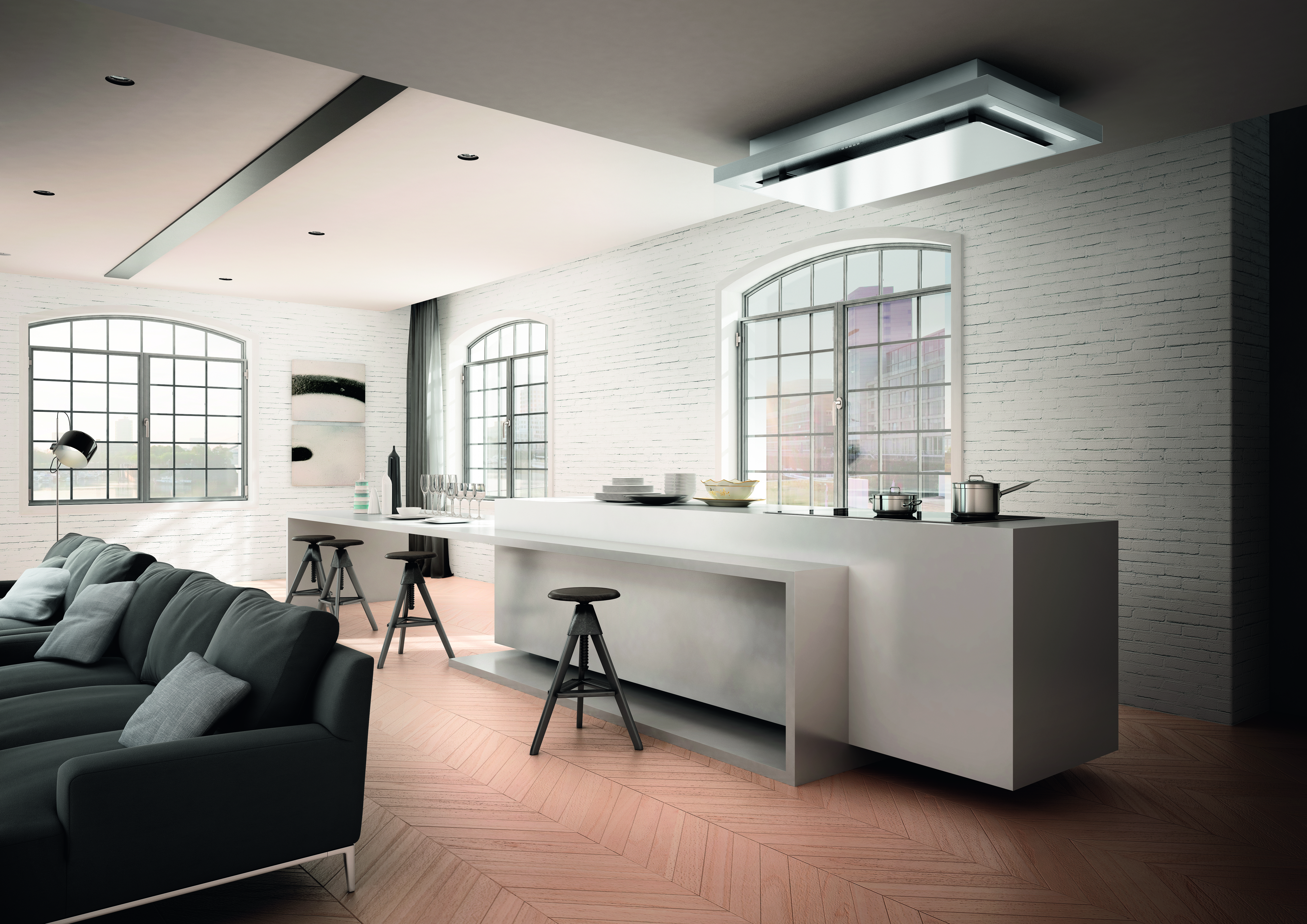
The Skypad is part of the next generation of ceiling hoods by Faber. Affixed directly to the ceiling, this cooker hood gives you plenty of unobstructed cooking space.
With the modern LED lights, the Skypad 2.0 is both a cooker hood and a stunning light feature to illuminate the space below. The twin brushless motors give you quiet and energy-efficient performance, plus delayed switch-off, remote control and Faber's Connection function (allowing you to operate the hood via a compatible Faber hob) are there for daily convenience.
The simple but elegant shape of the Skypad makes it perfect for any contemporary style kitchen. The remote-control unit controls the three high performance motor speeds, plus an even more powerful Intense mode.
...alternatives?
If you are looking for something even more subtle, why not try an integrated hood within your hob?
This innovative Bertazzoni range cooker with integrated hood is the first in its market. This model perfectly integrates the highest performance of the Professional series cookers, an impressive induction hob and a premium integrated hood.
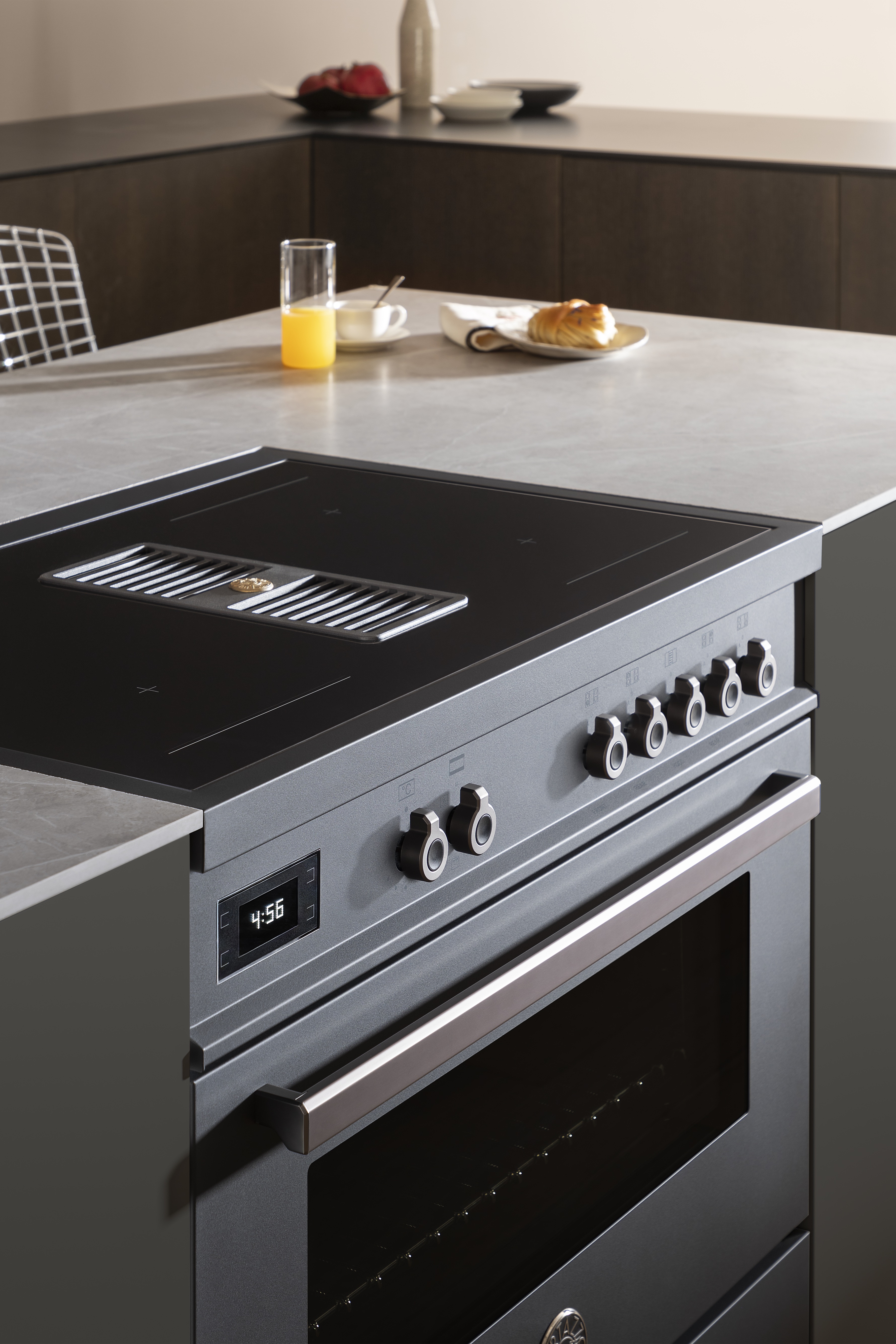
On top, you have the latest induction technology to give you ultimate power and controllability, and the added benefit of an easy-to-clean vitreoceramic surface, with four zones that include a booster feature, pot detection and residual heat indication for each zone.
The integrated 10-speed hood, controlled through the dedicated knob, can be installed in suction or filtering mode. The integrated ventilation system is 100% safe against water spillage.
Depending on which model you choose, you may need to purchase additional parts like extraction kits or filters. If you would like to discuss which cooker hood would be best for your kitchen or have any questions about any products mentioned, please call our team on 01244 402 975 or visit our website here.
